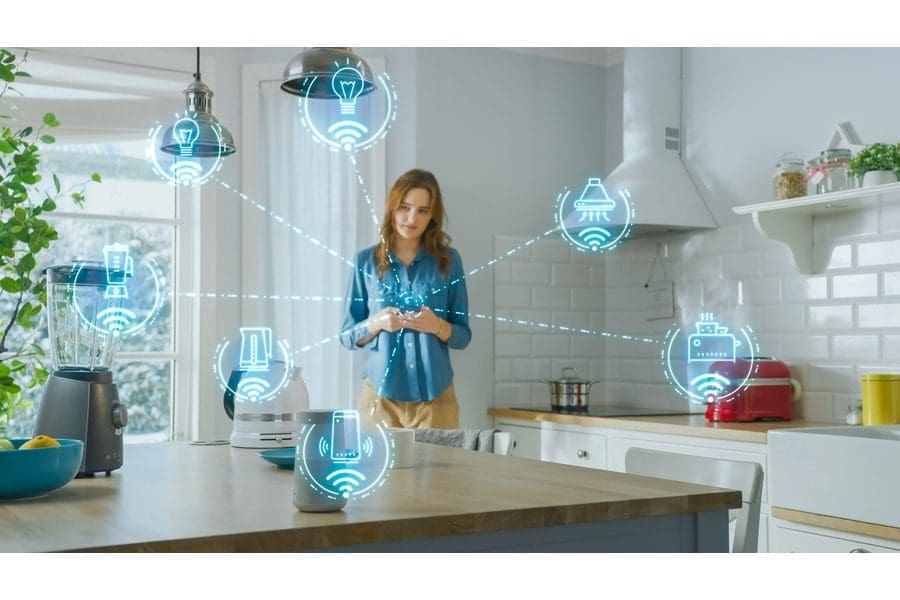What Is the Internet of Things?
The Internet of Things, or IoT, is an interconnected network of devices that exchange data using the internet. You may already use IoT devices in your daily routine. Some of them include:
- Smartphones
- Wearable devices (think: FitBit and VR headsets)
- Smart home devices/appliances (Alexa, Nest thermostat, etc.)
How Does It Work?
Internet of Things devices need hardware, software, and internet connectivity to function. Take a smart thermostat, for example. Those devices have tons of high-tech sensors that gather information from their surroundings (in this case, the temperature of your home). Whether it’s getting too hot or cold, the thermostat can adjust its temperature accordingly, then transmit the data over Wi-Fi. That’s how you can see the temperature display on your smartphone or the thermostat itself.
Benefits of IoT
The Internet of Things offers many advantages, including
- Convenience: You can remotely manage and monitor IoT devices for increased convenience and peace of mind. Imagine preheating your oven while on your way home or checking if you locked your front door when you’re not there. IoT technology makes all of this possible and more!
- Efficiency and Sustainability: IoT devices can optimize energy consumption and automate routine tasks more efficiently. For instance, smart lighting systems can adjust brightness according to natural light conditions, saving energy waste. Smart irrigation systems can water plants based on weather conditions. These efficiencies contribute to sustainability.
- Stronger Safety: IoT technology can enhance safety and security in many ways. For example, home security systems may use IoT to send alerts when suspicious activity is detected. Healthcare devices equipped with IoT capabilities can remotely monitor patients’ vital signs for early health diagnoses.
- Smarter Decision-Making: IoT devices produce tons of data that can be used for effective decision-making in fields like agriculture, transportation, and urban planning. Analyzing traffic patterns is one example of how these devices optimize transportation routes while decreasing congestion and increasing efficiency.
Challenges and Concerns
While the Internet of Things offers many advantages, it also presents some potential pitfalls and concerns, including:
- Privacy and Security: With more devices becoming connected, the risk of data breaches and unauthorized access increases, so comprehensive security measures must be in place to safeguard personal information and prevent cyberattacks.
- Standardization: With so many IoT devices available today, standardization has become essential. Common protocols and standards must be established to facilitate seamless communication between devices.
- Data Overload: IoT devices generate massive volumes of information. As a result, they require proper management and analysis techniques. That way, they can extract meaningful insights while avoiding information overload.
- Ethical and Legal Considerations: IoT raises ethical concerns about data privacy, consent, and ownership. Policymakers and organizations must develop clear regulations to address these concerns while safeguarding user rights.






